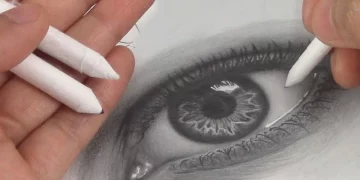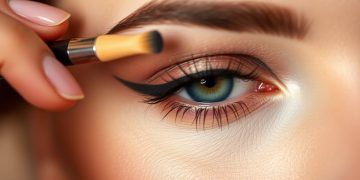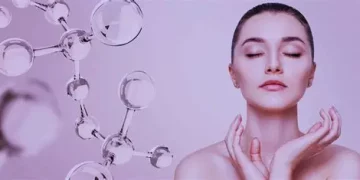Art and nature have long been seen as distinct realms, each with its own qualities and values. Nature, in its purest form, exists independently of human influence, whereas art is the creation of human hands, often an expression of internal states, intellectual musings, or emotional turmoil. However, the interplay between these two seemingly divergent realms raises an intriguing question: Can art and nature be considered two sides of the same aesthetic coin? This article explores this fascinating query, delving into the connections, contrasts, and shared qualities that make art and nature not just parallel, but interwoven expressions of beauty, form, and meaning.
1. The Natural Origins of Art
At the heart of the relationship between art and nature is the idea that all art is, in some way, a reflection of the natural world. The earliest human art—cave paintings, sculptures, and carvings—was inspired by the landscapes, animals, and people that surrounded early societies. These primitive artistic expressions, though stylized and abstracted, directly referenced the natural world in their subject matter.
As art evolved, so too did its relationship with nature. Classical Greek art, for example, celebrated the beauty of the human body, a form that is itself part of the natural world. The Renaissance, with its focus on realism and the scientific study of nature, sought to depict the world as accurately as possible, both in terms of human anatomy and the surrounding environment.
Nature provides the raw materials for art—paint, clay, stone, and wood—and even in more conceptual forms of contemporary art, nature remains an essential muse. Think of the minimalist works of Donald Judd or the environmental installations of Andy Goldsworthy, which engage directly with natural landscapes. Nature’s rhythms, its seasons, its shifting colors and textures, all find their way into the work of countless artists, sometimes in overt forms, sometimes more abstractly.

2. The Aesthetic Experience: A Shared Language
Both art and nature share a central characteristic: they are sources of aesthetic pleasure. This aesthetic experience—our capacity to find beauty, wonder, and meaning in the world—is a fundamental part of what it means to be human. The enjoyment we derive from observing a sunset, a tree in bloom, or the movement of clouds in the sky is akin to the pleasure we take in art. Both nature and art stimulate the senses and invite contemplation, whether through the intricate patterns of a flower’s petals or the vivid imagery of a painter’s brushstrokes.
In some ways, nature is the ultimate artwork, one that transcends time and place. The grandeur of the Grand Canyon, the delicate detail of a butterfly’s wings, the interplay of light and shadow in a forest—these are compositions crafted by forces beyond human control. Yet, much like a piece of art, they prompt reflection on beauty, complexity, and meaning.
The philosopher Immanuel Kant posited that the experience of beauty in nature and art is a form of “disinterested pleasure,” meaning that it doesn’t arise from any personal need or desire but rather from the appreciation of form, harmony, and balance. This concept highlights the similarities between the ways in which we interact with both art and nature. In both cases, we are drawn to the way elements come together to create something that resonates with our deeper sensibilities.
3. Nature as Inspiration and Medium in Art
As mentioned, nature has long been a source of inspiration for artists, but it has also served as the very medium of artistic creation. Land art, for example, uses the natural environment itself as a canvas, creating monumental works out of the earth, rocks, and other materials found in the landscape. Artists like Robert Smithson, whose famous work Spiral Jetty creates a massive coil of rock and earth in the Great Salt Lake, used nature as both the subject and the medium of their artistic expression.
Similarly, in more traditional forms of art, nature continues to provide endless resources. The practice of still life painting, where artists arrange flowers, fruits, or everyday objects, can be traced directly back to nature’s influence. These works are not simply representations of nature; they are meditations on the passage of time, human mortality, and the relationship between humanity and the natural world.
In the modern and postmodern era, the boundaries between art and nature have become increasingly blurred. Artists like Christo and Jeanne-Claude, known for their environmental installations, often manipulate natural spaces with human-made objects, creating surreal and thought-provoking juxtapositions. The contrast between the organic world and the constructed environment raises questions about the relationship between the two, as well as the human desire to control or interact with nature.
4. Contrasts and Tensions: Art’s Rejection of Nature’s Imperfection
While art has its origins in the natural world, one of the key differences between art and nature lies in how each addresses imperfection. Nature, with all its beauty, is far from perfect. It is messy, chaotic, and often unpredictable. Leaves fall in an untidy scatter, the sky is sometimes cloudy, and landscapes can be eroded by time and elements. There is no uniformity in the natural world—it is characterized by randomness and spontaneity.
In contrast, art often strives for perfection or at least a sense of controlled order. Whether through symmetry, balance, or harmony, many artistic traditions focus on creating something that transcends the natural imperfection of the world. In Western classical art, for instance, there was an emphasis on idealized forms—think of the human figures in the sculptures of Michelangelo, which sought to depict a flawless, divine version of the human body. Even in abstract or modern art, the artist’s hand seeks to impose order and coherence on the canvas or sculpture.
Yet, this drive for perfection often ends up reflecting nature’s imperfections in a unique way. Many abstract artists, including the likes of Jackson Pollock, embraced chaos and randomness in their work, which in some ways mimicked the spontaneity of nature itself. Thus, while art may begin by attempting to impose order on the world, it frequently ends up embracing the very imperfections it initially sought to refine.

5. Nature’s Influence in the Age of Technology
In the 21st century, art and nature continue to intersect, but the relationship between the two has evolved, especially with the rise of digital technology. Artists today are using cutting-edge tools—ranging from virtual reality to artificial intelligence—to create new forms of art that engage with nature in innovative ways.
For instance, digital artists may employ algorithms to simulate natural phenomena such as fractals or patterns found in plant growth. Nature’s complexity is being mapped, recreated, and transformed using the digital tools that are now integral to the artistic process. This fusion of nature and technology prompts a question: if nature itself is subject to technological manipulation, does it still retain its inherent aesthetic quality?
Some artists respond by using these same technologies to highlight the environmental issues confronting the natural world. Works that reflect on climate change, deforestation, and the degradation of natural habitats use technology not just as a medium, but as a commentary on the fragility of nature in the face of human intervention. In this sense, technology and art can both critique and celebrate nature, revealing a complex relationship between creativity, nature, and the evolving world we inhabit.
6. The Healing Power of Art and Nature
There is an undeniable connection between the emotional, physical, and psychological effects of both art and nature. The therapeutic benefits of spending time in nature are well-documented. Natural environments have been shown to reduce stress, enhance mood, and improve overall well-being. Similarly, engaging with art—whether by creating it or viewing it—can offer similar emotional benefits, helping individuals process complex emotions, reduce anxiety, and foster a sense of peace.
Art therapy has become an established practice for helping individuals connect with their feelings and gain a deeper understanding of their inner worlds. Likewise, ecotherapy—where individuals engage with nature as a way to heal or cope with mental health challenges—draws upon the same principles of healing that art offers.
In both cases, the aesthetic experience plays a key role. Nature’s soothing landscapes and artistic expressions, whether abstract or representational, provide an avenue for emotional release and self-discovery. Whether through the serene contemplation of a forest or the immersion in a beautifully crafted painting, the act of encountering beauty—whether in nature or art—offers a profound way to reconnect with oneself and the world.
7. Conclusion: Two Sides of the Same Aesthetic Coin
In the end, art and nature are not opposing forces; rather, they are two sides of the same aesthetic coin. Both share the capacity to inspire awe, to provoke thought, and to offer insights into the human experience. Art, though born of human creativity, often draws from the wellspring of nature’s beauty, complexity, and unpredictability. Nature, in turn, serves as the ultimate canvas, a dynamic and ever-changing masterpiece that inspires artistic endeavors and calls for reflection.
While art may seek to control and refine nature’s imperfections, it also, at times, embraces the chaos and beauty of the natural world. And, as technology continues to shape our understanding of both, the intersection between art and nature becomes ever more nuanced. Together, they offer a rich tapestry of inspiration, exploration, and healing, proving that perhaps, at their core, they are not so different after all.












































